Arctic Trials
In stark black and white documentary photos, international photographer Florencia Mazza Ramsay journeys 3,300 miles from El Paso, TX, capturing images of vast changes, both in the arctic climate and culture.
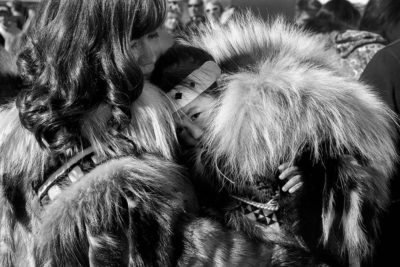
Of Argentinian decent, Ramsay spent several years jaunting from one private island to another capturing the latest fashion and automotive trends—but nine months ago, she traded in Prada and Porsche for Barrow, AK. The trip took her from the warmth of the desert Southwest and found her at one of the oldest permanent settlements dating back to AD 500 in the frigid Arctic. She spent three months following The University of Texas at El Paso graduate students, professors and international scientists and she hopes to share their experiences with the world.
Northernmost: Fragments Of An Arctic Field Season was the premiere exhibition at The Art Avenue Gallery for Ramsay since returning from Alaska last summer. Ramsay’s past portfolios include work for Ralph Lauren, Porsche and JUXTAPOZ. After some time analyzing life and its voices, Ramsay delved into documentaries that express an expansive collection of life, its challenges and changes. Her black and white digital images captured personal experiences with the residents of this deeply isolated area in the Arctic and provide an artist’s journey into the climate changes they endure.
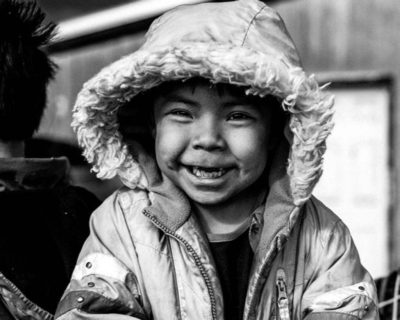
“I had to leave everything in El Paso to go to the middle of nowhere. It’s the complete opposite of what life is in El Paso—there is a lot of sacrifice to gain this knowledge. My main purpose was to document scientific effort and the way of life of the local culture and how they react with a very threatened environment,” said Ramsay.
Barrow sits at the base of a peninsula that juts into the Beaufort Sea with a population of 4,373. It’s a natural hunting place and its residents are torn between following heritage of living off their land and water, with food sources like caribou, fish, whale, seal, polar bear and walrus, or using the one local grocery store to sustain.
Ramsay says the elders are tough, and taught her a great deal about the Alaskan culture. “As a stranger, I was very cautious of not being too intrusive. I always try to be careful with my approach since I don’t want anyone to feel observed as a rarity,” said Ramsay.
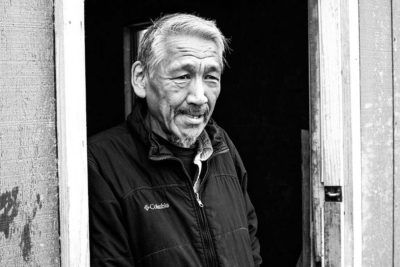
She says their heritage is clashing with their morals and internal decisions of life’s choices and the elders are concerned the younger generation is losing touch with its heritage.
“Kids don’t want to hunt, they want to eat junk food, drink sodas and go to the grocery store where the cost of goods are outrageous. Since Barrow is in such a remote area, dry goods and other staples are flown in by cargo for the grocery store, ranging from $2 a lemon and $11 for a gallon of milk,” said Ramsay. The locals receive a bi-annually tanker that arrives off the coast and delivers goods during the summer annual sealift because the tankers can’t maneuver the Arctic Ocean through the treacherous weather that the other months bring.
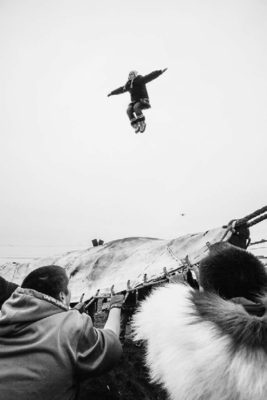
While the culture is challenged for sustainability many Alaskans honor a celebration Nalukataq—the spring whaling festival of the Inupiat Eskimos. This celebration is famously connected with a blanket toss and normally held throughout June. The festivities include not only giving thanks for a successful whaling season but the frozen whale meat, whale blubber and skin are evenly shared amongst the residents. The majority of those in attendance don themselves in traditional tribal wear. “Members of local whaling crew begin distributing Muktuk (whale blubber and skin) to families waiting with open and empty bags. The whaling crews make sure all the families who attend leave with a fair share of the catch,” said Ramsay. “It was impressive to experience how proudly they carry their ancestry and the care for the community as whole.”
Barrow is situated 320 miles north of the Arctic Circle and categorized as a polar climate with 160 documented days as below freezing during October through mid-May. The summer months are the warmest with the average high reaching 47 degrees. “We always had layers on because you never knew just how cold you would be or how warm it would get,” said Ramsay.

Shadowing the scientists Ramsay said she gained a new perspective and respect for their field. “You’re in the middle of nowhere and it forges relationships. The scientific community is so hopeful and I learned that being a scientist is not wearing a white coat in the lab and being a nerd—there is a lot of physical work that accompanied their research,” noted Ramsay.
A daily schedule could include a 10-18 mile hike along the coastlines of Beaufort and Chukchi to measure the erosion. UTEP research professor Stephen Escarzaga and husband of Ramsay, went on the expedition and explains some of the research on the tundra. “We have determined that lakes and ponds in the Alaskan tundra are disappearing. It’s vital to understand where this water is draining because the heat and nutrients it takes with it can upset the energy balance in other areas.
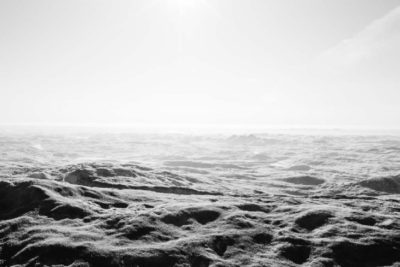
Escarzaga said they would take boats into the ocean to measure atmospheric CO2 cycles. “There is currently more carbon stored [in] Arctic permafrost (tundra) than exists in the atmosphere. It took this carbon thousands of years to sequester there. As the climate warms disproportionately in the Arctic, the active layer (the upper layer of permafrost that freezes and thaws each year) thaws earlier and deeper in the summer. This allows microbes to decay the ancient carbon (old plant matter). Think of a freezer full of food that suddenly stops working. This has the potential of accelerating climate change by releasing more carbon into the atmosphere, then in return quickening the rate of carbon release from permafrost,” said Escarzaga.
He said Bathymetry is used to measure the underwater depth and helps researchers model the severity of storm surges and the corresponding effects. “With rising oceans and frequent storms in the Chukchi Sea that effect the town of Barrow, a lot of research is being conducted to understanding how coastal regions are responding to flooding and coastal erosion,” stated Escarzaga.
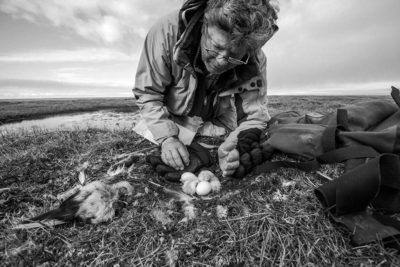
Since the tundra is also home to the wild, each participant had to prepare before the trip. “We were required to take a gun training class in El Paso before we left—just in case we ran into bears.”
Ramsay already has another trip to the Arctic planned for this summer, where she will continue her documentary photo series.

